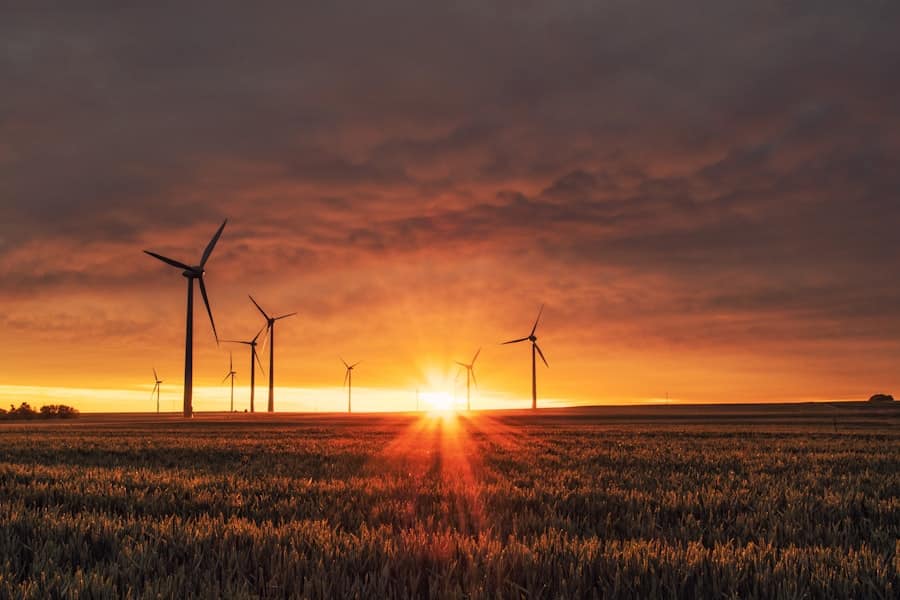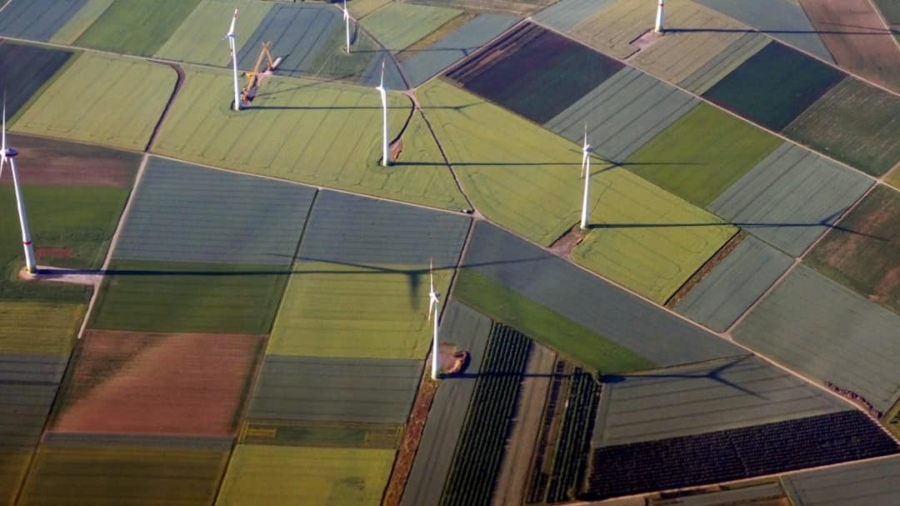In an era where digital transformation is at the forefront of business strategy, the demand for data centers has surged dramatically. These facilities, which house critical IT infrastructure, are essential for processing, storing, and disseminating vast amounts of data. However, traditional data centers are notorious for their high energy consumption and significant carbon footprints.
This has led to a growing awareness of the need for more sustainable alternatives, giving rise to the concept of green data centers. Green data centers are designed with a focus on energy efficiency, sustainability, and minimal environmental impact. They leverage innovative technologies and practices to reduce energy consumption while maintaining performance and reliability.
The transition to green data centers is not merely a trend; it represents a fundamental shift in how organizations approach their IT infrastructure. As businesses increasingly recognize the importance of corporate social responsibility, the adoption of green data centers aligns with broader sustainability goals. These facilities utilize renewable energy sources, advanced cooling techniques, and energy-efficient hardware to create a more sustainable operational model.
The integration of these practices not only helps mitigate environmental impact but also positions organizations as leaders in sustainability within their respective industries.
Key Takeaways
- Green data centers are designed to minimize environmental impact and maximize energy efficiency.
- Benefits of green data centers include reduced energy consumption, lower operating costs, and improved corporate sustainability.
- Energy-efficient technologies in green data centers include virtualization, efficient cooling systems, and renewable energy sources.
- Sustainable practices in green data centers involve recycling, responsible waste management, and use of eco-friendly materials.
- Green data centers have a positive impact on the environment by reducing carbon emissions and minimizing electronic waste.
Benefits of Green Data Centers
The advantages of green data centers extend beyond mere environmental considerations; they encompass a wide range of operational, financial, and reputational benefits. One of the most significant advantages is the reduction in energy costs. By implementing energy-efficient technologies and practices, organizations can significantly lower their electricity bills.
For instance, using advanced cooling systems such as liquid cooling or free-air cooling can drastically reduce the energy required for temperature regulation, which is one of the largest expenses in traditional data centers. Moreover, green data centers enhance operational efficiency. By optimizing resource utilization and minimizing waste, these facilities can achieve higher performance levels without compromising on reliability.
This efficiency translates into improved service delivery for businesses that rely on data center operations. Additionally, organizations that invest in green data centers often experience enhanced brand reputation and customer loyalty. As consumers become more environmentally conscious, they are increasingly drawn to companies that demonstrate a commitment to sustainability.
This can lead to a competitive advantage in the marketplace.
Energy-Efficient Technologies in Green Data Centers

Energy efficiency is at the core of green data center design, and various technologies play a pivotal role in achieving this goal. One prominent technology is virtualization, which allows multiple virtual machines to run on a single physical server. This not only maximizes hardware utilization but also reduces the overall number of servers required, leading to lower energy consumption and reduced cooling needs.
Virtualization has become a standard practice in modern data centers, enabling organizations to streamline operations while minimizing their environmental footprint. Another critical technology is the use of energy-efficient hardware. Modern servers are designed with power-saving features that allow them to operate at lower energy levels without sacrificing performance.
For example, processors with dynamic frequency scaling can adjust their speed based on workload demands, thereby conserving energy during periods of low activity. Additionally, solid-state drives (SSDs) consume significantly less power compared to traditional hard disk drives (HDDs), making them an attractive option for data storage in green data centers.
Sustainable Practices in Green Data Centers
Beyond technological innovations, sustainable practices are integral to the operation of green data centers. One such practice is the implementation of effective waste management strategies. Data centers generate substantial electronic waste (e-waste), which can be harmful to the environment if not disposed of properly.
Green data centers adopt recycling programs and responsible disposal methods to ensure that outdated equipment is handled in an environmentally friendly manner. This not only reduces landfill contributions but also promotes the recycling of valuable materials. Water conservation is another critical aspect of sustainability in data centers.
Traditional cooling systems often rely heavily on water for temperature regulation, leading to significant water consumption. Green data centers implement water-efficient cooling solutions such as evaporative cooling or closed-loop systems that minimize water usage. Additionally, rainwater harvesting systems can be integrated into the facility design to further reduce reliance on municipal water supplies.
By prioritizing water conservation, green data centers contribute to broader efforts aimed at preserving this vital resource.
Impact of Green Data Centers on the Environment
The environmental impact of green data centers is profound and multifaceted.
For instance, many green data centers are powered by solar or wind energy, which not only reduces reliance on fossil fuels but also contributes to cleaner air and a healthier planet.
The shift towards renewable energy sources is crucial in combating climate change and promoting sustainable development. Furthermore, green data centers contribute to biodiversity preservation by minimizing land use and habitat destruction. Traditional data center construction often involves significant land clearing and resource extraction, which can disrupt local ecosystems.
In contrast, many green data centers are designed with sustainability in mind, often repurposing existing structures or utilizing modular designs that reduce their environmental footprint. This approach helps protect natural habitats while still meeting the growing demand for digital services.
Cost Savings and Financial Incentives of Green Data Centers

While the initial investment in green technologies may seem daunting, the long-term cost savings associated with green data centers can be substantial. Energy-efficient operations lead to lower utility bills, which can result in significant savings over time. Additionally, many governments and organizations offer financial incentives for businesses that invest in sustainable practices.
These incentives can include tax credits, grants, or rebates for implementing energy-efficient technologies or renewable energy systems. Moreover, companies that adopt green practices often experience lower operational costs due to reduced maintenance needs and longer equipment lifespans. Energy-efficient hardware typically requires less frequent upgrades and repairs, allowing organizations to allocate resources more effectively.
The cumulative effect of these savings can enhance overall profitability while supporting corporate sustainability goals.
Future Trends in Green Data Centers
As technology continues to evolve, so too will the landscape of green data centers. One emerging trend is the increased integration of artificial intelligence (AI) and machine learning (ML) into data center operations. These technologies can optimize resource allocation and energy usage by analyzing real-time data on workloads and environmental conditions.
For example, AI algorithms can predict peak usage times and adjust cooling systems accordingly, further enhancing energy efficiency. Another trend is the growing emphasis on circular economy principles within the data center industry. This approach focuses on minimizing waste through reuse and recycling initiatives.
Companies are increasingly exploring ways to repurpose old equipment or components rather than discarding them entirely. This shift not only reduces e-waste but also fosters innovation as organizations seek creative solutions for extending the lifecycle of their assets.
The Role of Green Data Centers in Shaping the IT Industry
Green data centers are poised to play a transformative role in shaping the future of the IT industry. As businesses increasingly prioritize sustainability and environmental responsibility, the demand for green data center solutions will continue to rise.
The integration of advanced technologies and sustainable practices will drive innovation within the industry, paving the way for more efficient and environmentally friendly operations. As organizations recognize the importance of aligning their IT strategies with sustainability goals, green data centers will become essential components of modern business infrastructure. The commitment to creating a greener future through responsible data center management will ultimately define the trajectory of the IT landscape for years to come.
In addition to the advancements in green data centers reshaping the IT industry, another important aspect of technology that is constantly evolving is order flow trading software. This article provides in-depth reviews and analysis on the best order flow trading software available in the market. Just like the importance of energy efficiency in data centers, having the right tools and software in trading is crucial for success in the financial industry.
FAQs
What is a green data center?
A green data center is a facility that is designed to minimize its environmental impact by using energy-efficient technologies, renewable energy sources, and other sustainable practices.
How are green data centers reshaping the IT industry?
Green data centers are reshaping the IT industry by promoting sustainability and reducing the environmental impact of data storage and processing. They are driving the adoption of energy-efficient technologies and renewable energy sources in the IT sector.
What are the benefits of green data centers?
The benefits of green data centers include reduced energy consumption, lower operating costs, decreased carbon emissions, and a smaller environmental footprint. They also contribute to corporate social responsibility and sustainability efforts.
What technologies are used in green data centers?
Technologies used in green data centers include energy-efficient servers, cooling systems, and power distribution units, as well as renewable energy sources such as solar and wind power. Additionally, advanced monitoring and management systems help optimize energy usage.
How are green data centers contributing to sustainability?
Green data centers contribute to sustainability by reducing energy consumption, using renewable energy sources, and implementing sustainable practices such as waste recycling and water conservation. They help organizations meet their sustainability goals and reduce their overall environmental impact.

